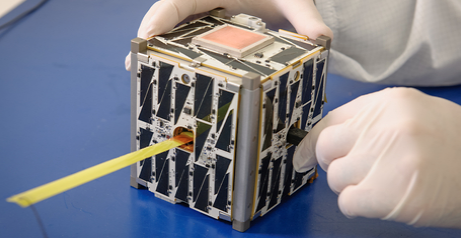NASA's CubeSat initiative lures student space researchers


NASA's CubeSat Launch Initiative is open for a fresh round of schools and students to submit proposals in order to send their own tiny satellites into space.
On Tuesday, NASA announced that the next round of its CubeSat Launch Initiative, part of the White House Maker Initiative, was open for proposals by schools, teachers and students.
NASA's CubeSat Launch Initiative program gives "students, teachers and faculty a chance to get hands-on flight hardware development experience in the process of designing, building and operating small research satellites," according to the agency. In addition, CubeSat is a low-cost way for people to conduct their own space research -- building their own satellites, but also being able to use NASA's resources to see them launched into space.
The CubeSat spacecraft are nanosatellites which have tiny dimensions -- approximately 4x4x4 inches and a typical weight of three pounds. Each one equals one "Cube," or 1U, and these tiny satellites are launched together in clusters. In total, each cluster generally weights 12 kilograms at launch. In order to be launched, the research should address aspects of science, exploration, technology development, education or operations.
One goal of the CubeSat Launch Initiative is to encourage the next generation of students in space exploration and satellite technology. In addition, NASA hopes that all 50 states in the US will participate and launch at least one satellite each. To this end, the agency is particularly interested in submissions for this round from Arkansas, Delaware, Georgia, Idaho, Iowa, Kansas, Maine, Minnesota, Mississippi, Nebraska, Nevada, New Hampshire, New Jersey, North Carolina, Oklahoma, Oregon, South Carolina, South Dakota, Washington, West Virginia, and Wyoming.
To date, NASA has selected 114 CubeSats from 29 states, 17 of which have already been launched. Nine additional nanosatellites are due for launch in the next 12 months.
Proposals must be sent in electronically by 25 November, and NASA will select payloads by 6 February 2015 -- although there is no guarantee these will be launched. The satellites will be flown as auxiliary payloads on agency rocket launches or be deployed from the International Space Station beginning in 2015 and running through 2018. N
In July, the space agency launched a mission dedicated to measuring carbon dioxide levels in the Earth's atmosphere. An observatory was launched in order to pinpoint carbon dioxide changes in order to help NASA predict how our climate could change in the future.